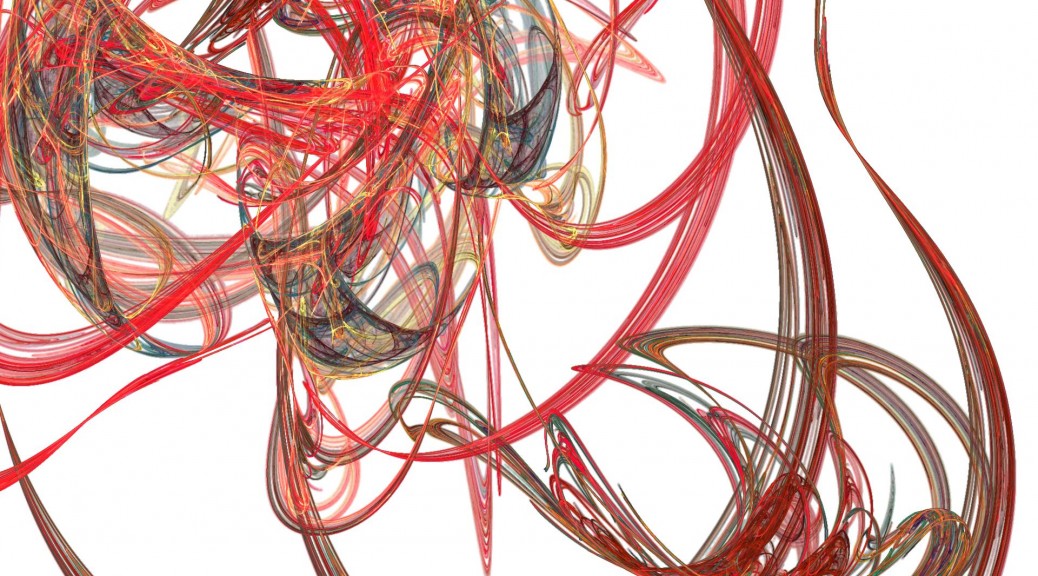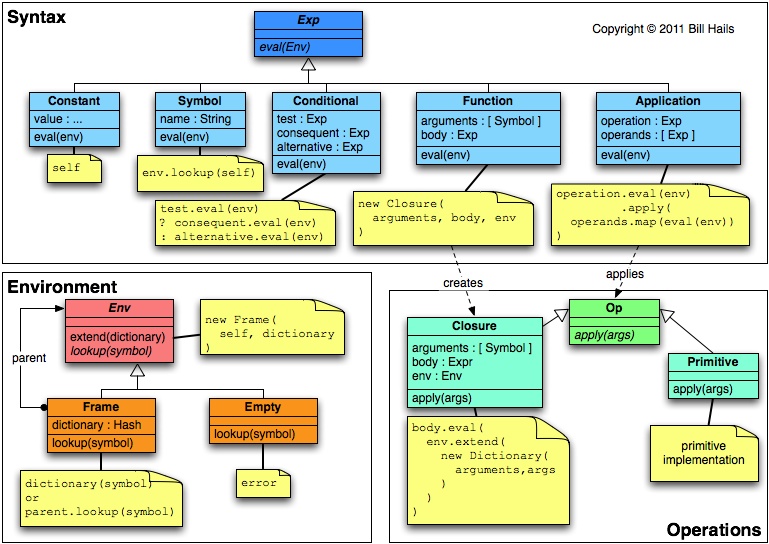Recently I’ve been thinking about how best to describe a really simple language so that the reader can just “get it” in one go. As you probably know I’m quite fond of UML and this is what I’ve come up with:
I’d hope that this diagram stands alone, but for the impatient I’ll describe it.
You can see that the implementation breaks down into three primary groups of classes: Syntax structures, Environment and Operations. The environment is the simplest and the best thing to look at first. You can see an abstract base class Env with concrete Frame and Empty subclasses. The Env class provides one concrete method: extend() which takes a dictionary (hash, or whatever) as argument and creates and returns a new Frame containing that dictionary and a parent pointer to the original environment. The Frame and Empty subclasses supply a lookup() method which, for the empty env just errors. For a non empty env it either looks up the symbol in the dictionary or calls lookup() on its parent, passing it the symbol.
The Syntax group of classes all inherit from a common abstract Exp base class that declares one abstract method: eval(env), that they all must implement. A Constantevaluates to itself. A Symbol looks itself up in the argument environment. A Conditional evaluates the test then either evaluates the consequent or the alternative.Function declarations evaluate by creating a new Closure object passing it the body and formal arguments to the function, along with the current environment.Application of an operation involves evaluating the operation expression in the current environment, evaluating the argument expressions in the current environment, then calling the resulting operations apply() method on the resulting evaluated arguments. Note that in operands.map(eval(env)) that eval is sort of Curried: the argument env is explicit, but the map supplies the objects whose eval methods are to be called.
Lastly, Operations themselves share an abstract Op base class with an abstract apply() method. An Op is either a Primitive or a Closure. The implementation of the primitive apply() is just an implementation detail, however the implementation of the Closure‘s apply() ties the whole thing up:
- Extend the captured environment (the one passed to new()) binding the formal arguments (passed to new()) to the actual arguments (passed to apply()).
- Evaluate the body of the closure in that new environment.
That’s about as simple as I can make it.

